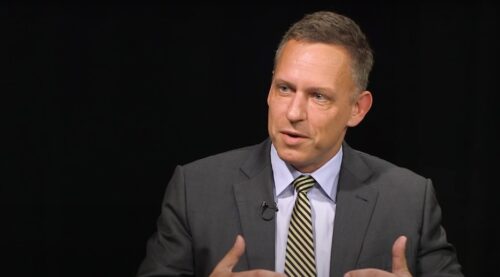The nationally prominent legal expert in the taxation of nonprofits talks to Michael E. Hartmann about the taxation of higher-education endowments, comparing and contrasting the rationale for it to that for taxing private-foundation endowments, and explores some tax ramifications of other, newly emerging forms of giving.
Ellen P. Aprill joined the faculty at Loyola Law School in Los Angeles in 1989 after having worked at the U.S. Department of the Treasury’s Office of Tax Policy. During the almost three and half decades since then, she has studied, written, and taught—law students, legal practitioners, and nonprofit grantmakers and grant recipients alike—about both the concepts underlying and the “in-the-weeds” intricacies of nonprofit tax law. She’s done so with intelligence and a keen eye for detail, combined with a personal kindness and grace.
Aprill is now a professor emerita at the school, having retired last year. Later this month, Loyola Law School will honor and celebrate her career with an event featuring presentations by authors of articles on nonprofit tax law for a forthcoming Loyola of Los Angeles Law Review symposium in tribute to her.
Aprill was kind enough to join me for a recorded conversation late last month. The just less than 15-minute video below is the second of two parts of our discussion; the first is here. In the first part, we talk about her career, the different revenue-raising and regulatory roles of the IRS, the non-revenue-related role of state attorneys general, the tax treatment of private-foundation endowments, and the challenges of following complicated IRS rules for small foundations.
In the second part, we discuss the taxation of higher-education endowments, comparing and contrasting the rationale for it to that for taxing private-foundation endowments, and explores some tax ramifications of other, newly emerging forms of giving.
Aprill and Hartmann
In 2017, Congress passed and Donald Trump signed into law a 1.4% excise tax on the income of the endowments of colleges and universities whose student bodies are majority U.S. citizens, where more than 500 students are tuition-paying, and where total assets exceed $500,000 per student.
“Somehow, we had a combination of those on the right who distrust elite universities in general and those on the left,” Aprill tells me, “or those who are at least not so far right, who were offended by the amount of private equity that the large endowments use and the kind of enormous compensation that these private-equity managers get. So that combination ended up getting this provision passed.”
In talking about the rationale for taxation of higher-education endowments and comparing it to that for any further taxation of private-foundation endowments, Aprill says, “I can either make a distinction between the rationales or say, yes, there are enough similarities, we should treat them in the same.”
And addressing taxation and other forms of giving, she says, “We are seeing a lot of philanthropy be conducted not through private foundations” and “we at least have to think of other vehicles, besides private foundations, when we look at these issues.
“I do think we pay a lot of attention to the income tax deduction, which doesn’t necessarily motivate. There are a couple other things we need to think about,” including the donation of appreciated assets and the estate tax. “We need to think about all the taxes and not just the income tax.”






